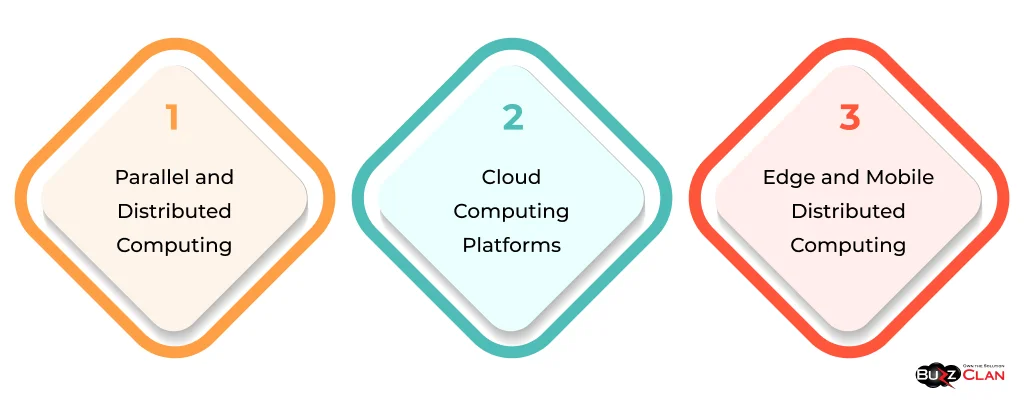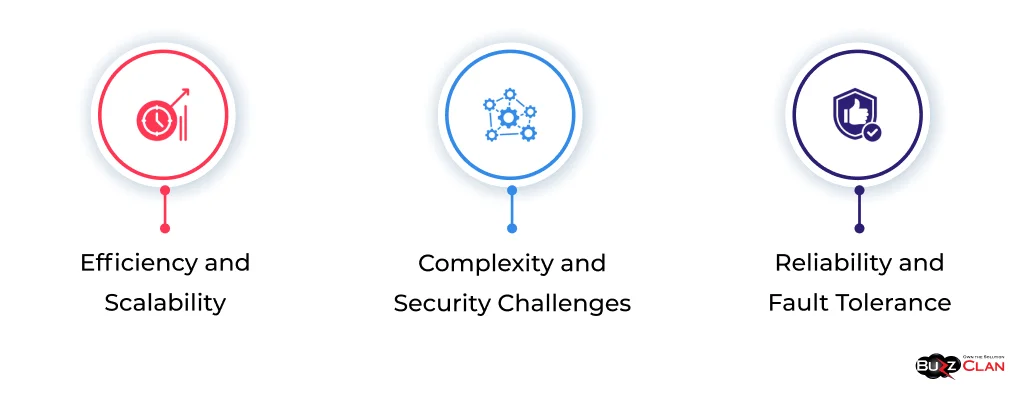What is Distributed Computing?
Harash Jindal
Apr 17, 2024
Introduction
Distributed computing refers to computational models whereby components of an application or system are spread across multiple computers connected over a network. It developed in response to the increasing complexity and scale of computational challenges exceeding the capabilities of traditional centralized frameworks.
Distributed systems power modern technologies at immense scales - coordinating millions of servers collaboratively in cloud data centers, leveraging thousands of edge devices for IoT networks, and clustering supercomputers across continents to study the universe's mysteries.
This comprehensive guide will demystify distributed computing by traversing its fundamental concepts, real-world applications, enabling technologies, implementation strategies and outlook for the future. By the end, you will have clarity regarding the pivotal role of distributed computing in nearly every technology domain driving human progress today through ubiquitous coordinated intelligence. Let's dive in!
The Fundamentals of Distributed Computing
Concept of Distributed Computing
Distributed computing is a computational model in which components of an application or system operate in coordination across multiple autonomous computers communicating over a network. This contrasts with centralized computing, where processing occurs on a single system.
Distributed systems emerged, tackling the extraordinary complexity of computational feats involving massive-scale data processing, real-time responsive querying, and resilience necessitating redundancy. They dynamically utilize networked commodity systems collaboratively.
Architecture of Distributed Systems
The architecture of distributed computing environments consists of heterogeneous machines connected by networking middleware, enabling resource sharing and message passing between nodes to coordinate tightly to execute encapsulated application tasks smoothly.
This decentralized approach collectively provides greater cumulative computing power, storage, and specialized capabilities than is available monolithically, conferring immense scaling, efficiency, and redundancy advantages.
Transition Towards Decentralized Computing
While mainframes and supercomputers sufficed to tackle computational feat sequentially using centralized resources historically, ballooning complexity demanded divide-and-conquer approaches leveraging concurrency, exploiting parallelization opportunities using cheap commodity cluster computing abundantly.
Distributed methodologies emerged by applying fundamental systems design advancements around loose coupling, high cohesion, composability, and stateless services, hardening resilience against outages through redundancy alongside immense horizontal scaling, conferring efficiency simultaneously.
Types and Models of Distributed Computing

Parallel and Distributed Computing
While parallel computing allows single apps to multi-thread intensive operations on tightly coupled infrastructure locally, distributed computing loosely coordinates entire applications across remote networked nodes decoupled, facilitating independent scaling.
Cloud Computing Platforms
Leading public cloud providers encompass AWS, Microsoft Azure, Google Cloud Platform, IBM Cloud, and Alibaba Cloud, whose data centers contain hundreds of thousands to millions of servers operated in tandem as distributed platforms.
Edge and Mobile Distributed Computing
Emerging paradigms around edge computing and multiplying billions of mobile devices connected using ultra-low latency 5G promise to massively scale distributed systems coordination, taking computing closer to data sources and usage locales for responsive, resilient real-time application experiences.
Early geo-distributed device mesh computing applications span IoT, smart vehicles, industrial telemetry, augmented reality coordination, and urban mobility optimization through crowdsourcing.
Advantages and Challenges of Distributed Computing

By harnessing networked commodity hardware pooled collectively, distributed systems achieve immense efficiency gains manifesting in:
- Horizontally scalable capacity adjusting elastically against application workload spikes without overprovisioning monolithically
- Failover and redundancy mechanisms minimizing disruption risks across geographically spread infrastructure tiers
- Parallelized throughput acceleration by running concurrent computational tasks across clustered systems simultaneously
Distributed computing environments sustain resilient operation through:
- Stateless application architecture without inter-process affinity to specific infrastructure
- Asynchronous communication enabling loose component coupling
- Redundancy mechanisms like data replicas, backups, and failover handling hardware crashes gracefully
By reducing centralization risks, distributed approaches uphold the survivability of collective system capabilities despite individual component disruptions.
However, distributed computing also introduces challenges, including:
- Integration complexity from interdependent component coordination
- Networking latency delays during time-sensitive transaction processing
- Cyber risks requiring rigorous access controls across expanding attack surfaces
Careful instrumentation, compartmentalization, and governance mechanisms help address multilayered complexities, holistically tackling privacy, integrity, and coordination assurance.
Distributed Computing in Practice
Beyond cloud data centers, distributed computing broadly impacts application classes from:
- Rendering graphics and special effects through computation sharding
- Synthetic genomics and molecular dynamics folding leveraging cross-institutional compute federations
- Real-time gaming and virtual worlds coordinating edge devices like AR headsets
- Fraud analysis by payment gateways harnessing cyber threat intelligence and transaction graphs globally
- Geographically dispersed services like DNS, CDN, and DHCP based on availability zones
The exponential growth of data across sensors, media, instrument logs, and consumer platforms requires massively powerful, cost-efficient distributed data warehouses like Snowflake, analytics engines like Apache Spark, and deep learning platforms like Azure Machine Learning running on generalized GPU compute like NVIDIA Clara processing insight from immense datasets efficiently.
Platforms like Einstein@home allow the pooling of volunteered computing resources from over 100,000 participant devices coordinating complex workload distribution across a high throughput grid transparently - empowering computation of radio signals from stars, protein misfolding models, and earthquake risk projections demand immense resources necessitating global collaboration by participants united towards advancing scientific progress democratically.
Distributed Computing Technologies and Frameworks

Several key infrastructure advancements help construct distributed systems:
- High-speed genomics interconnects transmitting massive data sets between compute nodes like Infiniband RDMA and Gen-Z ports
- Containerization technologies allowing application packaging, mobility between servers, and geo-redundancy like Docker
- Cryptography mechanisms ensuring end-to-end encryption safeguards for sensitive artifacts and communications securable
- Asynchronous protocols like AMQP that enable event streaming across decentralized components reliably
Ease of application development surfaces as a key priority for distributed computing frameworks when seeking talent adoption through:
- Simplified programming abstractions hiding concurrency and state management constraints like actor model and serverless
- Support for web-scale capabilities natively inside frameworks uplifting developer productivity using languages like Erlang and Elixir, known for scalability alongside developer joy
- State management taming complexity debugging ephemeral systems through rigor imposed by reactive frameworks like Akka and Orleans
Multiple technologies gaining momentum expand horizons across distributed systems usage notably:
- Blockchain emergence allows the creation of decentralized applications transcending trust boundaries between mutually untrusted entities to enable secure multi-party transactions.
- Confidential computing using encrypted enclaves preserves data privacy guarantees for highly sensitive analytics workloads spanning multi-tenant, multi-cloud domains, giving data owners control.
- Quantum-safe encryption protocols introduced provide future-proof protection for distributed identities, access policies, and critical communications, building long-term data security assurances.
Distributed Computing Strategies for Businesses
Migrating enterprise workloads onto distributed technology environments allows harnessing cloud scale advantages but requires evaluating readiness across dimensions like:
- Application architecture - Assessing coupling constraints, data gravity needs, and capacity demands to model the target state realistically
- Legacy process transition urgency - Prioritizing modernization roadmaps balancing current bottlenecks against viable interim transition states
- Talent skills availability - Expanding organizational capabilities in platforms engineering, distributed data management, and large-scale troubleshooting through systemic enablement
As monolithic enterprise resource planning suites like SAP ECC, Oracle eBusiness, and Microsoft Dynamics get reimagined into modular SaaS alternatives like S/4HANA, Oracle ERP Cloud, and D365 Finance - underpinning distributed architectures allow easier incremental capability adoption, protection against disruptions and scaling on-demand benefiting global conglomerates.
Blending distributed open source technologies like Kafka, Cassandra, and Tensorflow with managed cloud infrastructure services on AWS, Azure, and GCP facilitates organizations focusing talent on application innovation rather than backend plumbing by harnessing prebuilt resilience, securing, and governance guardrails mature cloud platforms deliver.
Conclusion
In closing, distributed computing has graduated from academic curiosity to an indispensable paradigm underpinning nearly every technology capability at a global scale today - across cloud platforms, IoT and edge networks, blockchain decentralized applications, and scientific supercomputing initiatives by pooling resources and structuring coordinated intelligence elastically.
Mastering distributed systems allows your organization to participate in technological transformations, actively uplifting human productivity immensely using sensibly decentralized solutions tackling challenges exceeding the abilities of any central authority. Ultimately, distributed progress compounded across participating agents increments collective advancement!
FAQs

Get In Touch
